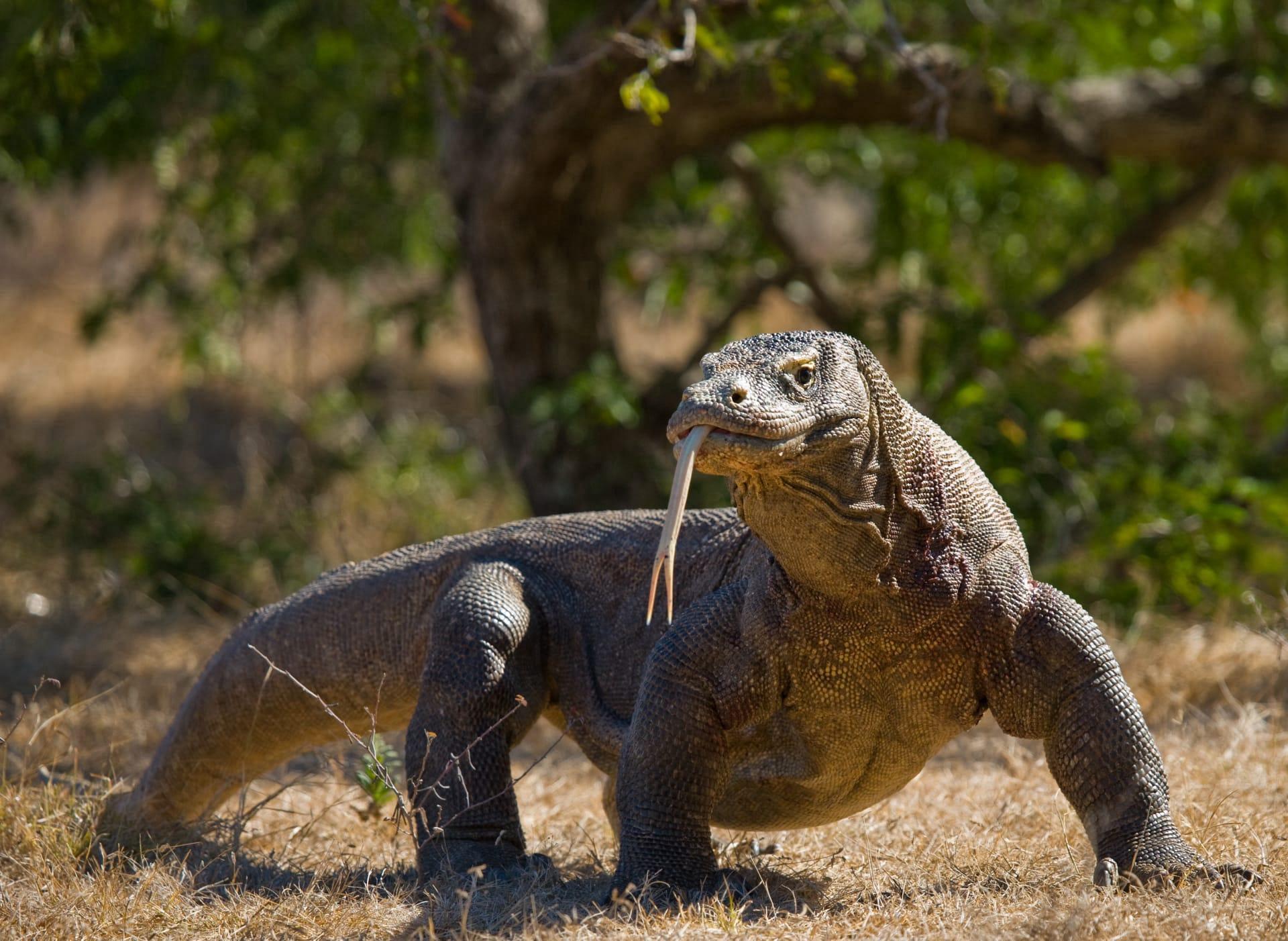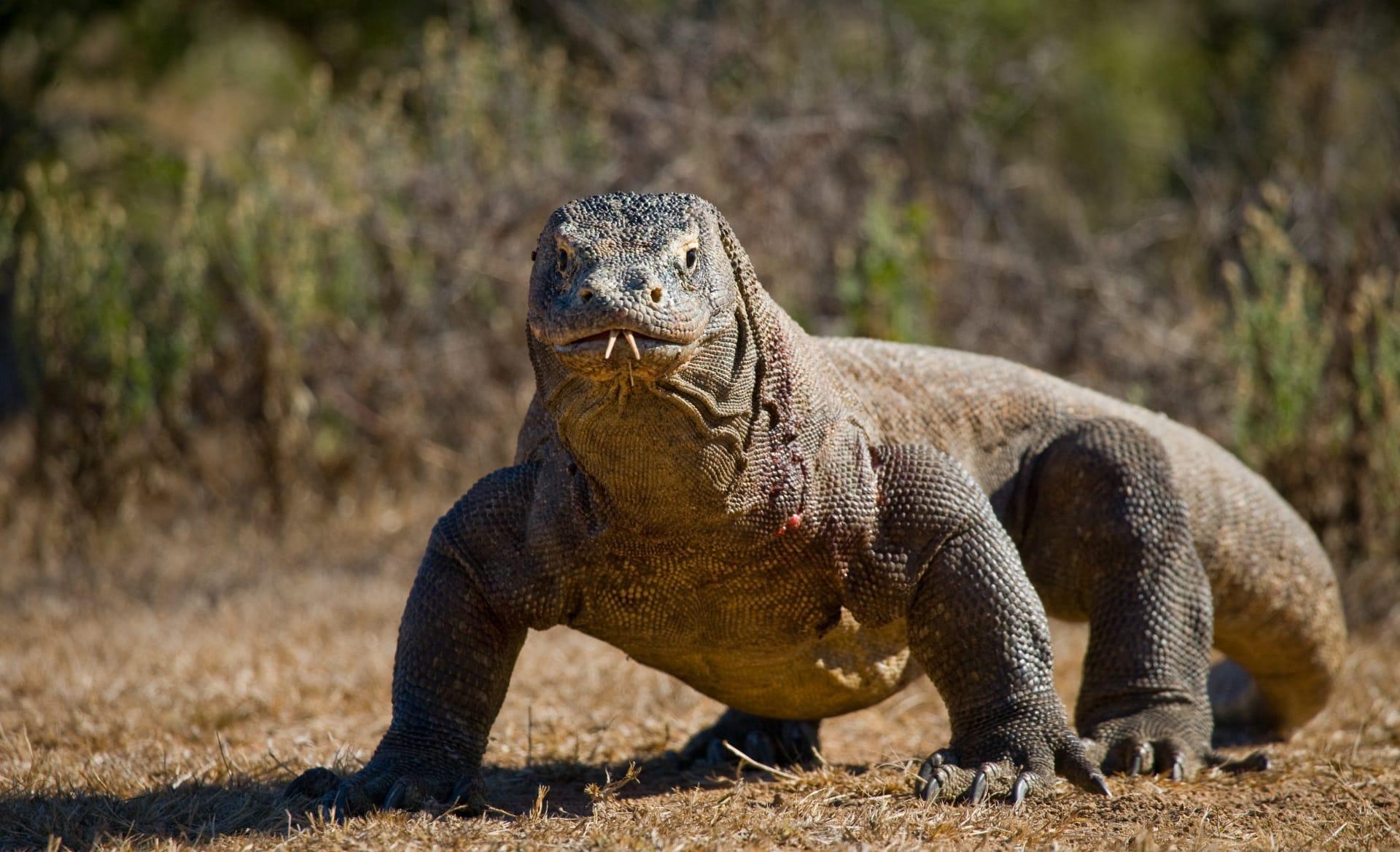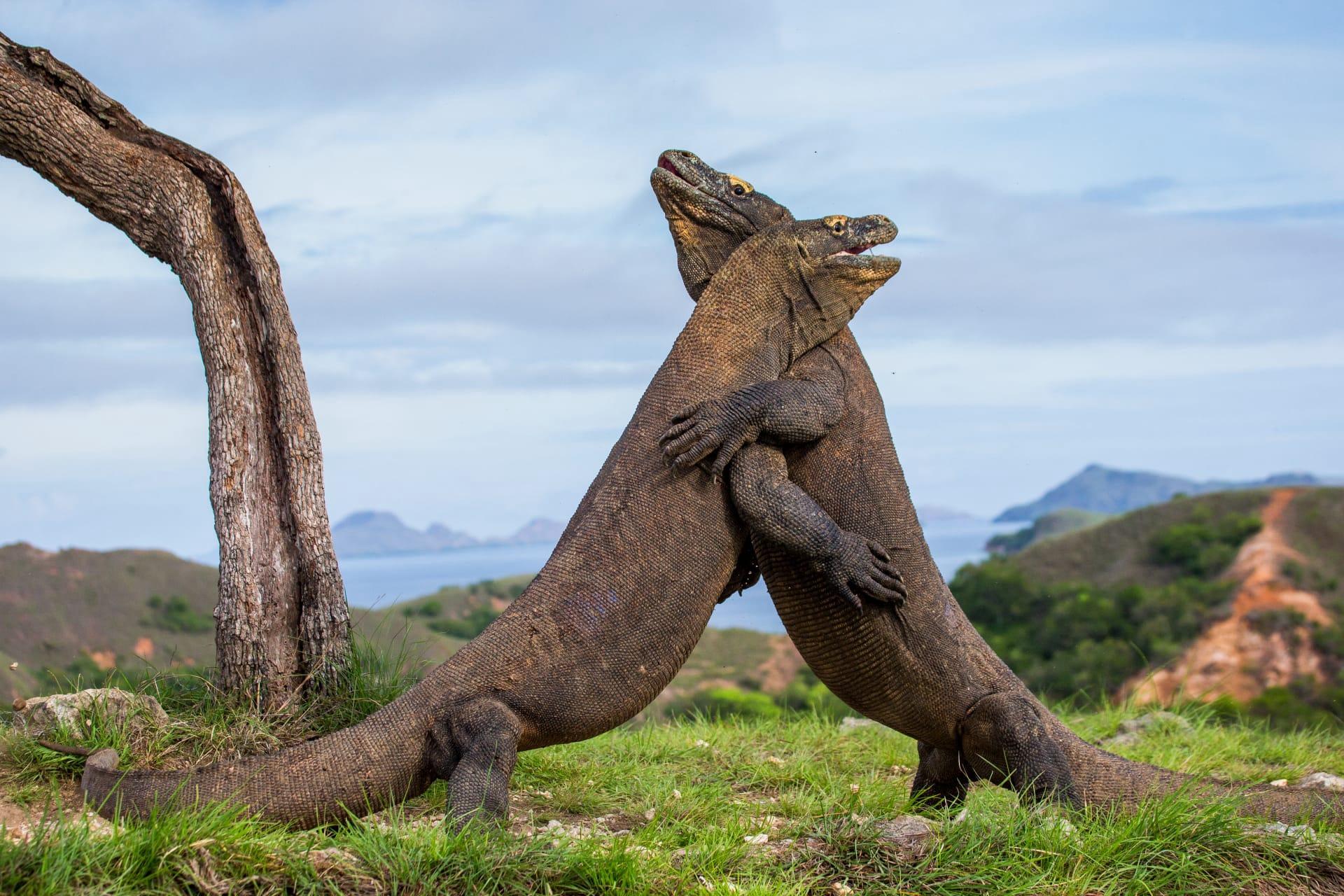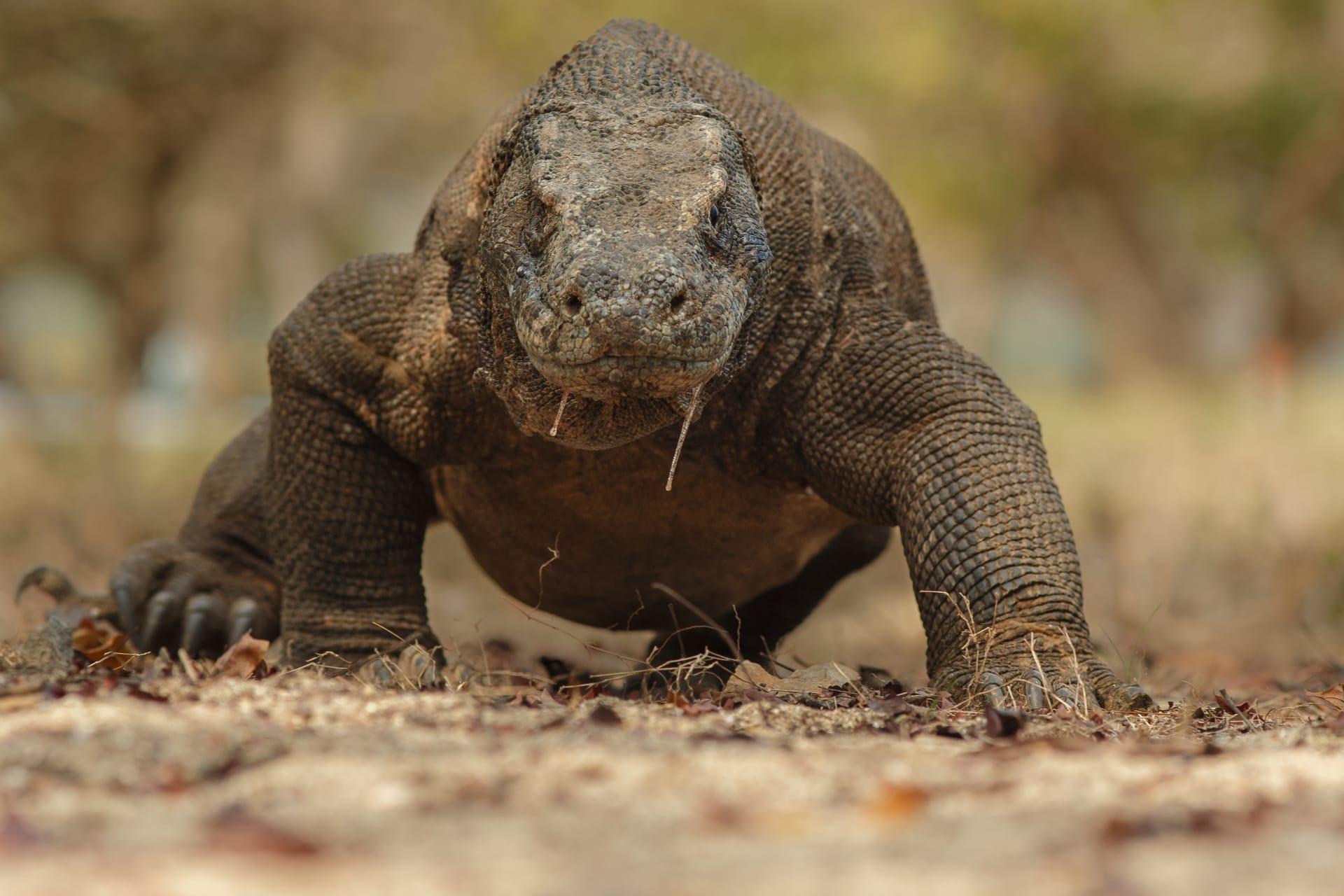Komodo Dragon Trivia
- Home /
- Trivia Question /
- Animal /
- Komodo Dragon Trivia
1
Question: How big can Komodo dragons get?
Answer: Komodo dragons are the largest living lizards, reaching lengths of up to 10 feet (about 3 meters) and can weigh up to 150 kilograms (around 330 pounds). Their size is a result of island gigantism, a phenomenon where animals isolated on an island grow larger than their mainland counterparts.
Question: What do Komodo dragons eat?
Answer: These mighty lizards are carnivores and have quite an appetite. They primarily feed on carrion (dead animals), but they are also skilled hunters. Their diet includes deer, pigs, and even water buffaloes. Younger Komodo dragons often climb trees to catch smaller prey like birds and insects.

2
Question: Do Komodo dragons have venom?
Answer: Contrary to popular belief, Komodo dragons do possess venom glands. For years, it was thought that their bites were deadly due to bacteria in their saliva, but recent research has revealed that they actually have venom glands in their jaws, which can lead to rapid blood loss and shock in their prey.
Question: Are Komodo dragons fast runners?
Answer: Despite their size, Komodo dragons can sprint up to speeds of 20 km/h (about 12 mph) in short bursts. This speed is quite impressive considering their large, muscular build. However, they prefer to ambush their prey rather than chase it over long distances.

3
Question: How do Komodo dragons reproduce?
Answer: Komodo dragons have a unique reproduction process. They are solitary creatures, coming together only to mate. Females lay up to 30 eggs, which they bury in the earth. Interestingly, in the absence of a male, females can reproduce asexually through a process called parthenogenesis, where the offspring are genetically identical to the mother.
Question: What is the lifespan of a Komodo dragon?
Answer: In the wild, Komodo dragons live for about 30 years, but their lifespan can extend up to 50 years in captivity. Their long lifespan, coupled with their solitary nature, means that a Komodo dragon can dominate its territory for many years.

4
Question: Can Komodo dragons swim?
Answer: Yes, Komodo dragons are proficient swimmers. They can cross bodies of water between islands in their native habitat, which includes several Indonesian islands. This ability helps them in searching for food and escaping danger, and also aided their spread across their current range.
Question: How do Komodo dragons sense their prey?
Answer: These lizards have an extraordinary sense of smell, which they use for detecting food. They use their long, forked tongues to sample the air, and then touch it to the roof of their mouth, where a special organ analyzes the airborne molecules. This way, they can detect carrion from up to 9.5 kilometers (6 miles) away.

5
Question: Are Komodo dragons solitary animals?
Answer: Yes, Komodo dragons are predominantly solitary creatures, especially adults. They come together primarily to mate and occasionally may be seen feeding together if a large carcass is available. Their solitary nature contributes to their territorial behavior.
Question: How do Komodo dragons regulate their body temperature?
Answer: Being cold-blooded reptiles, Komodo dragons rely on their environment to regulate their body temperature. They bask in the sun to warm up and retreat to shady spots or burrows to cool down. This behavior is essential for their survival, as it helps in digestion and overall physical activity.